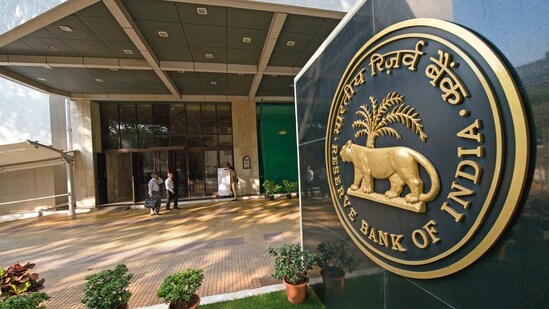The Reserve Bank of India’s inflation forecasting model is coming under increasing scrutiny from economists after the central bank consistently overestimated price pressures this year, contributing to a hawkish policy approach.
The central bank’s inflation miss in the first three months of the year was 0.7 percentage points—the biggest gap in six years, and well above economists’ projections. Estimates in the subsequent two quarters have also been off the mark, by smaller margins of 0.2 and 0.1 points, respectively.
Economists predict another big miss in the current quarter after a surprisingly low inflation print in October. That means the RBI’s projection of 2.6% for the fiscal year through 31 March 2026, published as recently as in October 2025, is already looking out of date. UBS Group AG economist Tanvee Gupta Jain sees inflation ranging between 2% and 2.2% in the period, a historical low.
The upshot is that the RBI has probably been more hawkish than necessary, economists say, and reluctant to cut interest rates even though the economy likely needed a boost after US President Donald Trump slapped 50% tariffs on Indian goods.
In June, RBI Governor Sanjay Malhotra delivered a bigger-than-expected repo rate cut of 50 basis points, but shifted the policy stance to neutral, a relatively hawkish move signaling narrower scope to ease rates further. The RBI has kept rates unchanged since then, despite the slowdown in inflation.
Sonal Varma, an economist at Nomura Holdings Ltd., said central banks tend to be conservative in their forecasts and forecasts often “embed policy intentions” rather than pure predictions.
The risk, though, is when inflation consistently comes in below forecasts, inflation-adjusted interest rates “end up being much higher than intended, and monetary policy becomes unintentionally restrictive,” she said. “Repeated misses can also hurt policy credibility.”
The main reason the RBI and economists have gotten inflation forecasts so wrong this year is because of the sharp drop in food prices. Harvests have been strong after a favourable monsoon season, while improvements in supply chain management have helped lower costs. Food makes up 46% of the consumer price index, which means it has an outsized impact on inflation outcomes. In October, food prices contracted a record 5.02% from a year earlier.
“Inflation forecasts have gone wrong for everyone this year, but what matters is that policy adjusts in line with actual outcomes and new information,” said A. Prasanna, chief economist at ICICI Securities Primary Dealership. He expects the RBI to cut the repo rate by a quarter point in December.
At the August monetary policy meeting, Malhotra said the volatility in food prices had swung headline inflation by as much as 3 percentage points on average over the past eight to nine years. He noted that core inflation, which excludes volatile food and fuel components, had picked up only slightly.
The RBI updated its inflation forecasting framework in 2023, the so-called Quarterly Projection Model 2.0, which incorporated more detailed modeling of fiscal-monetary interactions, domestic fuel pricing, capital flows, exchange rates, and central bank interventions.
The model is now being further refined with new data to enhance its “nowcasting and forecasting of key macroeconomic variables and developing more robust models,” Malhotra said in a press briefing after the first policy meeting he chaired in February.
Another reason for the overestimation in inflation could be an outdated consumer price basket, which hasn’t been revised for over a decade. India’s Ministry of Statistics and Program Implementation will release an updated gauge early next year, helping to mitigate some of the forecasting errors.
Similar forecast errors have been seen in economic growth estimates as well. Gross domestic product expanded 5.4% in the July-September quarter of 2024, compared with the RBI’s 7% projection, marking one of its biggest forecasting misses in recent years. In the April-June quarter of this fiscal, GDP grew 7.8%, well above the central bank’s 6.5% estimate.
The RBI’s most recent forecast—published last month—is for inflation to average 1.8% this quarter, almost double the pace predicted by economists like Kaushik Das of Deutsche Bank AG, who sees it coming in at 0.7%. Inflation is then expected to accelerate gradually next year to reach about 4.5% in April-June, according to the RBI, which will likely revise its forecasts in December.
Soumya Kanti Ghosh, chief economic adviser at State Bank of India Group, and a member of the Prime Minister’s Economic Advisory Council, said with inflation remaining soft, the RBI likely missed an opportunity to take pre-emptive action in August and October.
“With inflation forecasting on monthly basis remaining a difficult task, the audacity of long-term forecasting can only weaken central bank’s communication with market forces,” he said.
